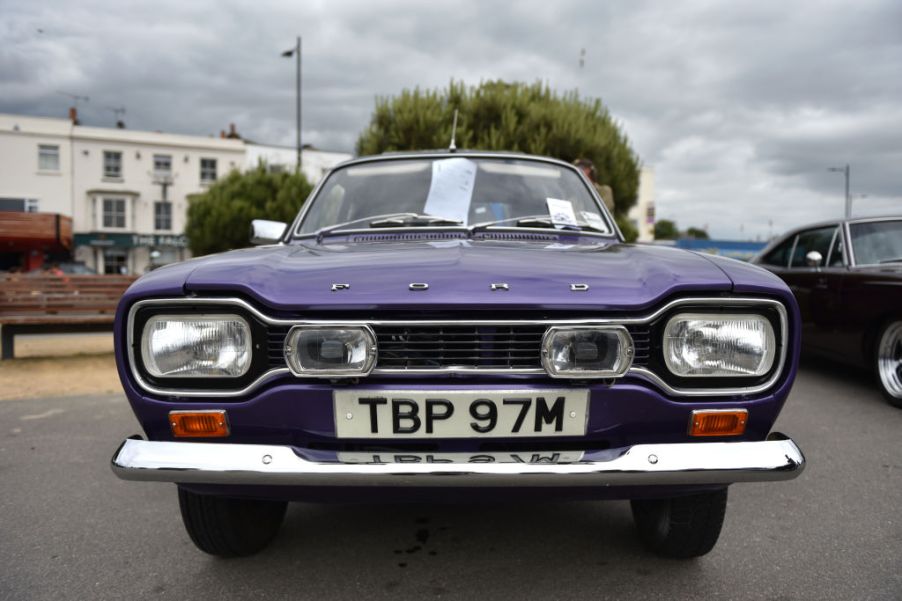
You Probably Don’t Know These 12 Weird Facts About Cars
Cars are such a big part of our lives. But it’s easy to overlook the many bizarre facts about them that aren’t common knowledge. But this info can provide insight into the automotive world. Here are 12 oddball facts about cars most people probably don’t know.
1. Dubai police have the world’s fastest police car
The Dubai Police Department’s fleet of 14 supercars includes an Audi R8 and Lamborghini Aventador. However, the fastest police car in the fleet is the Bugatti Veyron. With a top speed of 253 miles per hour, it’s painted the department’s official colors of green and white and is tricked out with a light bar on top. If you visit the area, you may see it parked at the Mall of the Emirates or zooming along Dubai’s coastal highway, Jumeirah Road.
2. Porsche’s first car was electric
In 1898, 22-year-old Ferdinand Porsche’s first car design was the Egger-Lohner electric vehicle C.2 Phaeton model, nicknamed the P1, reports BBC. The P1 could go up to 21 miles per hour and had a range of 49 miles on one charge. But the 22-year-old engineer moved on to other projects, and the car went untouched in a shed in Austria until 2014. One thing’s for sure: Porsche has come a long way from the P1 to its soon-to-be-released Taycan EV.
3. South African drivers have the option to install flamethrowers on their cars
During the 1990s, violent crime reached epidemic proportions in South Africa. Johannesburg, in particular, became notorious as the carjacking capital of the world. In response, inventor Charl Fourie developed the Blaster, reports CNN. Also known as the “BMW Flamethrower,” it could be mounted on the sides of vehicles.
4. The world record to remove and replace a car engine is 42 seconds
On November 21, 1985, five Royal British Marines removed and replaced the engine of a Ford Escort in a mere 42 seconds. How did these men break the Guinness World Record? They practiced for two weeks. Whether the Ford Escort’s engine is the easiest engine to remove and replace out of all cars is still up for debate.
5. Whale oil was used in some car transmissions until 1973
Sad but true: The auto industry used sperm whale oil as an ingredient in automatic transmission fluid. Automakers like General Motors continued to use it from World War II until 1973. That year, Congress passed the Endangered Species Act, which banned its use.
6. The Ford F150 is programmed with over 150 million lines of code
Software for a vehicle’s onboard computer continues to grow more complex, as evidenced by the enormous number of lines of code in the Ford F150. Most of this code is written in proprietary computer languages. And we thought over 8 million lines of code to operate an F-35 fighter jet was a lot!
7. Mid-century American-made cars had way too many defects
Following World War II, cars made in the U.S. became bigger, heavier, and fancier. Unfortunately, they did not become safer or more reliable, according to History.com. The mid-’60s saw buyers driving home cars with an average of 24 defects, many safety-related.
8. The man who invented cruise control was blind
Ralph Teetor lost his sight when he was five years old. The mechanical engineer was inspired to invent cruise control, or “Speedostat” as it was originally trademarked, after riding with his lawyer. Teetor noticed the lawyer slowed down while talking and sped up while listening, explains the Smithsonian. The jolting, unsteady motion irritated Teetor. So he designed a device that used magnets and springs to control a car’s speed.
9. The Honda Prelude was the first mass-production car to have four-wheel steering
In 1987, Honda offered a mechanical four-wheel steering option on its third-generation Prelude. More than 80% of buyers ponied up for this option, but Honda expected only 30%. The Prelude’s performance was also surprising as it outran established players such as Porsche and Ferrari on the slalom with a record speed of 65.5 miles per hour.
10. U.S. auto production nearly stopped entirely during World War II
In 1941, U.S. auto manufacturers produced more than 3 million cars. Over the course of World War II, however, only 139 more cars were made, reports PBS. During this time, carmakers like Chrysler and Ford contributed to the war effort by assembling fuselage, airplane engines, tanks, and guns.
11. The world’s largest speeding fine was $1,000,000
In 2010, Swiss police pulled over a Swedish man and slapped him with a $1,000,000 speeding fine, the largest to date. The man’s Mercedes SLS AMG was clocked at 186 miles per hour, more than two and a half times the local speed limit.
In Switzerland, speeding fines are based on driver income and how much the speed limit is exceeded. Police reported the 570-hp Mercedes — which has a top speed of 196 miles per hour — was traveling so fast it took a third of a mile to stop. The driver’s other claim to fame was shattering the speeding record on Swiss roads.
12. Only 18% of Americans know how to drive a stick shift
Americans don’t like to drive a stick shift anymore, according to U.S. News and World Report. Only an estimated 18% of Americans can drive stick. Currently, 5% of the cars sold in the U.S. have manual transmissions, which creates even less incentive to learn how to drive stick. Traffic congestion discourages drivers from buying cars with a manual transmission, too.


